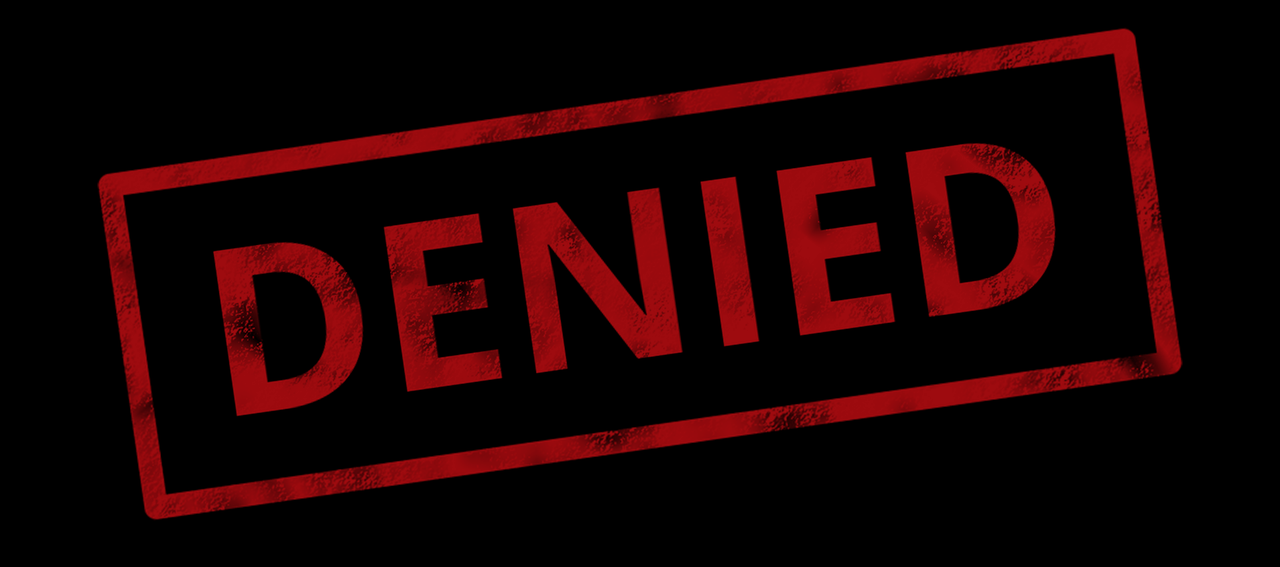Breaking: 99% of People Who Apply for Student Loan Forgiveness Get Denied
If you're banking on student loan forgiveness, we have some seriously bad news: Your chances of getting your loans forgiven through Public Service Loan Forgiveness (PSLF) are slim.
According to recent audit by Government Accountability Office (GAO), the U.S. Department of Education (DOE) has denied 99% of the PSLF applications that came in over the past year. Why all the denials? A mix of reasons, including:
- Borrowers who are not actually eligible for PSLF
- Borrowers who have not yet made 120 qualifying payments
- Borrowers who were on the wrong repayment plan, and
- Errors on applications.
What the report says
The news is shocking: in September 2018, the U.S. Education Department reported that of the 28,913 public service loan forgiveness applications submitted as of June 30, 2018, only 289 were accepted—and just 96 people got their loans forgiven.
We’ve written before about how difficult it is to qualify for PSLF. There are a lot of hoops to jump through, and the program is notoriously picky.
2017 was the first year where people could start to claim forgiveness and the process is still new; apparently there are some extremely large kinks still to be worked out, and the Department of Education chalks many of these rejections up to borrower error.
But if 99% of borrowers are being denied, doesn't it stand to reason that there might be something wrong with the program? We'll tackle that question in a minute.
First, let's dig into the DOE's explanations piece by piece.
The borrowers’ loans are ineligible
PSLF is only available for federal Direct loans. While most federal loans issued today are Direct, only 21% of federal loans were Direct in 2007 when the program started.
Many people applying for forgiveness under PSLF today may have had non-qualifying federal loans the whole time without realizing it.
So that's not frustrating at all ...
Some borrowers haven’t made 120 payments yet
While it might seem like a fixture of life today, the PSLF program was only established in 2007. The program is only a little over 10 years old.
2017 was the first year when people could qualify for forgiveness, because it only kicks in after 120 qualifying payments—which takes about 10 years. And that’s only if your payments were uninterrupted.
Only the borrowers with a perfect payment record—who never skipped or were late on a payment, never went into forbearance, deferment or default, and never worked for a non-qualifying employer—are getting their loans forgiven now.
Note that your 120 payments don't need to be consecutive, but you do need to have 120 of them.
Some borrowers are on the wrong repayment plan
You have to be on one of the income-driven repayment plans to qualify for PSLF. Getting onto and continuing to qualify for these programs is a yearly project in itself.
Recently, Congress established a temporary $350 million fund allowing PSLF applicants who were rejected for this reason to get another chance at loan forgiveness.
Application errors
Approximately 8,000 of the people who applied made errors on their applications, according to the DOE. The PSLF program is notoriously picky about this, and if you do make a mistake and want to correct it, you have to initial all your changes.
However, the Department of Education has issued an invitation for people in this category to resubmit their applications.
Borrowers aren't to blame
All the blame can’t be placed on borrowers’ shoulders, though. In fact, the New York Times puts it squarely on the program.
Yes, most of the applicants who were rejected didn’t qualify—and many seem to have filled out the application wrong. But the qualification requirements are so complicated and confusing that it’s easily possible for even the most engaged borrowers not to realize that they’re enrolled in the wrong repayment program, have the wrong type of loan, or don’t even work for a qualifying employer.
Many people have been documented saying they were told they qualified when they didn’t. According to the article, FedLoan Servicing—the program’s administrator—never received an instruction manual from the Department of Education on how the program works. Employees at FedLoan also complained about contradictory advice given by agency staff.
The article tells us that FedLoan Servicing and other loan servicers have also made grave errors in counting up how many qualifying payments borrowers have made—and counted on borrowers to spot the errors.
See also: How to Refinance Your FedLoan Student Loan.
FedLoan Servicing has already been sued by the Attorney General of Massachusetts over major errors in its handling of the program, and there are two more lawsuits in the works. In the meantime, if you’re applying for PSLF anytime soon, make sure your application is airtight. It will have to be.
Don't qualify for PSLF? See how much you could save by refinancing.

